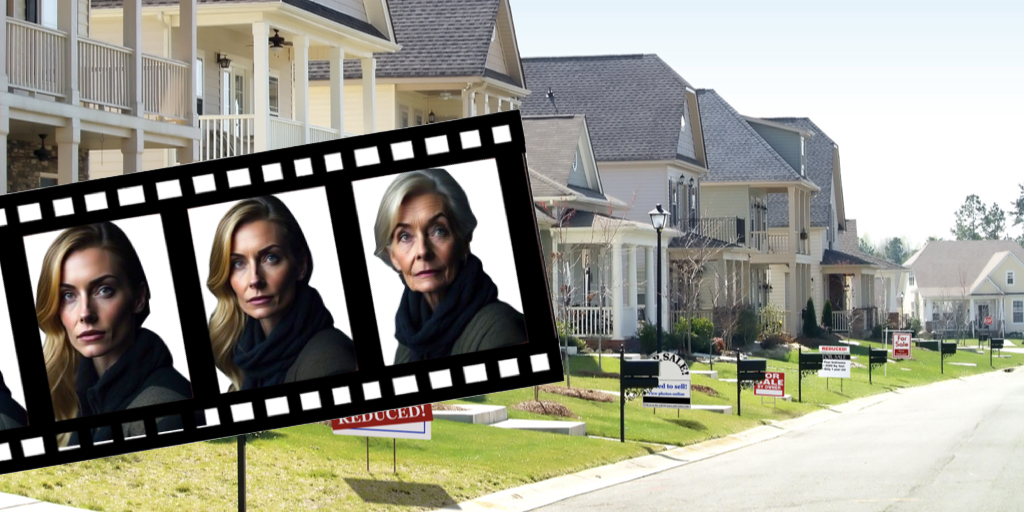With a little help from our friends…
A year ago we explored some new models for seasoned adult living, beyond assisted living or standard retirement communities. In With A Little Help from Our Friends, aging expert and journalist Beth Baker takes us on a journey through expanded innovation that elders themselves are co-creating.
Aging in place is only as good as the place you’re aging in, writes Baker. Today’s mature adults are less likely to swim in the river of denial and more apt to be proactive, taking charge of their current and future independence by focusing on interdependence, the watchword of successful aging in place. And reverse mortgage can play a valuable role in enabling this to happen.
Some of the creative community options reverse mortgage professionals need to be aware of as Boomers become clients:
- Villages. Launched with Beacon Hill (a Boston suburb) in 2002, Villages are not actual structures, but neighbor-to-neighbor support systems designed to enable older adults to remain at home as they age. They’re volunteer run, usually with one or two paid staff, and provide everything from a ride to the doctor, to help changing a lightbulb, to grocery shopping — or “just” a friendly ear. Members (the seniors who receive assistance) pay an affordable annual fee, and are encouraged to volunteer to the extent they are able and willing. Villages also organize social events and outings, exercise classes or computer training; whatever the members want. The model is growing rapidly, with nearly 200 Villages now open nationwide and another 150 in development. The Village to Village Network helps communities establish and maintain their own Villages.
- Cohousing. The brainchild of a Danish architect, cohousing emerged in the U.S. in the 1980s, and like Villages, is mushrooming. The model enables each household to own (or in some cases, to rent) their own house or condominium, while sharing common space, weekly meals, and other social and lifestyle needs (e.g., cars and lawnmowers). Cohousing is collaborative, non-hierarchical, and can be multigenerational or dedicated to those 55+. Moving to a cohousing community can be an excellent way for seniors to downsize, perhaps with a HECM for Purchase, while creating a wider support network of neighbors and friends for their later years.
Some cohousing models are designed for a specific elder niche, such as the Babayagas’ House that opened in a Paris suburb in 2012, an affordable urban site for women 50+ whose residents pledge to perform ten hours of weekly chores, and to care for one another with no professional staff. The model has caught fire in Canada, with Baba Yaga Place launching in Toronto.For those who become ill while living in cohousing, it may also be a way to live one’s final months without needing to resort to a nursing home. Baker relates the story of one single, childless 60-year-old man living in an intergenerational cohousing community, who developed colon cancer. His neighbors accompanied him to medical appointments, delivered meals, etc., enabling him to live nearly twice as long as his prognosis and to die peacefully at home, surrounded by friends and loved ones who sang to him in his final hours. This is an aspirational vision for both how to live and how to die.
- Cooperatives. Similar to cohousing in terms of community focus, housing cooperatives have a distinct legal and financial structure. Autonomy and affordability are two bywords, along with democratic member control and concern for the wider community. While most housing coops are multigenerational, senior housing coops are growing. Community relationships that support elders as they age are one of the strongest reasons seniors cite for choosing this form of retirement living.
- Housesharing. While creating community with friends or strangers may seem the purview of college students and twenty-somethings, housesharing is also an economical and creative way for elders to find companionship and reduce expenses in their later years. Some people opt to live among peers; others are comfortable with an intergenerational arrangement, and some just want to rent a room to defray costs — though they may find the tenant becomes a friend. The National Shared Housing Resource Center can help seniors find a shared housing organization in their community.
Affording the Future
In the third section of her book, Baker dives into “getting from here to there,” including accepting help (even if that means a robot assistant or smart home technology), advocating for direct care workers (another term for caregivers) and examining the ways seniors can plan for the unknown.
In lieu of pricey long-term care insurance, Baker suggests that reverse mortgage might be a viable way for mature adults to turn their home equity into cash to use as needed. She writes, “Many of us will likely turn to the value in our home to help pay for care.” With a combination of home healthtech, direct care workers, community support, and available home equity, the next wave of retirees may be able to remain at home until the very end.









No comment yet, add your voice below!